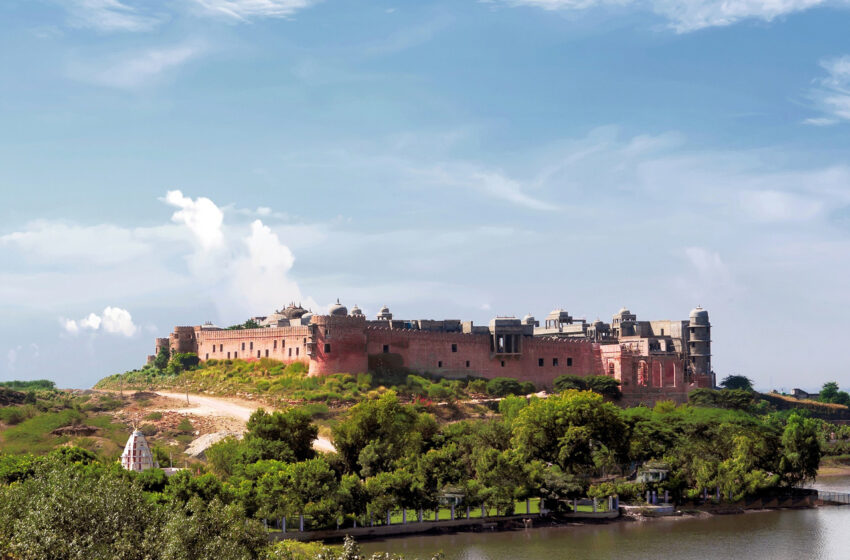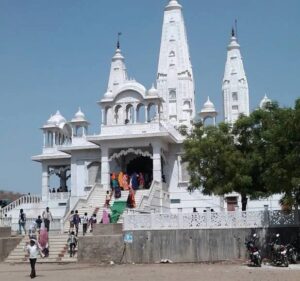Six Senses Fort Barwara all set to welcome tourists from October 15

Fort Barwara will now be called Six Senses Fort Barwara
Rajkumari Sharma Tankha
Come October 15, and Fort Barwara near Sawai Madhopur in Rajasthan will begin welcoming guests. The fort, renamed as Six Senses Fort Barwara, was being readied for tourists since long – architects and heritage conservationists took over a decade to restore this 700-year-old fort. A part of this fort has been transformed into a 48-suite heritage resort and spa, and will now be managed by Six Senses group. The restoration work was done by Six Senses group in association with the Espire Group (run by Prithviraj Singh, grandson of Raja Man Singh of Barwara). The architectural design was overseen by Ahmedabad-based firm Panika, that earlier also undertook The Oberoi Udaivilas project.
As expected, each of the 48 suites that have been readied for the tourists draw heavily from Rajasthani design – be it latticework or embroidered furnishings. What’s more the panoramic view of the lake, the hilltop Chauth ka Barwara temple and the Aravali range can be seen from a number of suites. The walled fort also includes two original palaces and two temples within its premises.

About seven hour drive from Delhi, Fort Barwara is a perfect symbol of Rajasthani art, décor and cuisine. It was originally constructed in the 14th century by the Chauhans next to the beautiful Banas river, and acted as an outpost for them. In 1451, Maharaja Bheem Singh Chauhan built the Chauth Bhawani temple on a hilltop near it, at about 1,100 feet above the village, Chauth ka Barwara.
In 1734, the Rajawat dynasty from the Hadas conquered it. After Raja Man Singh from the noble family of Barwara fought alongside the British in the World War II, the Brits bestowed upon him the title of Rao Bahadur.
Legend has it that in olden days, the village Chauth Ka Barwara was completely surrounded by Chauru Forest. Villagers here worshipped goddess Chauth Bhawani (also called as Chauru Mata or Chauth Bhairavi Mata), who according to folk lore had killed the demon Darud Bhairo in a fierce fight during which a part of the forest also got destroyed. After this, Chauru and Kanjar tribes’ people started worshipping the Chauth Mata, and her idol occupied a pride of place in the village. In time other local tribes, like Meenas too followed suit.

The existing temple has an interesting story around it. According to what we hear from the locals, in the 15th century, the idol of the goddess Chauth Mata mysteriously vanished from the village temple one day. After this, the then ruler Raja Bheem Singh started seeing the goddess in his dreams. One day, while on a hunt, chasing a deer the Raja went deep into the forest, lost his men in the woods and was almost delirious with exhaustion when a sudden rain saved him. Coming back to his senses, he saw a small girl with a bright aura around her playing a little distance away. As he approached the small girl, she vanished, and the Raja found the idol of Chauth Mata on the same spot. Believing her to the actual goddess, the king established a temple there and declared the place as a pilgrimage site.
There are many stories of miracles associated with this temple. Women believe that worshipping Chauth Mata increases the longevity of their husbands’ lives; many others believe that several ailments can be cured after you pray to the Mata and visit the temple. On the day of Karva Chauth, a huge mela is organised here, which is quite a tourist attraction.
More to explore

While Fort Barwara is a tourist attraction in itself, while you are there you can also visit the Ranthambore National Park, which is just 30-minute drive away. You can go for the tiger safari or explore the historical places strewn around, during the heritage walks.
Once the famous hunting grounds of the Maharajas of Jaipur, the Ranthambore National Park is a major tourist attraction today. Jeep Safari is the best way to enjoy wildlife sighting at this place.

How to Get There
From Jaipur: 2.5 hours from the airport
fFrom Delhi: around sever hours by road

